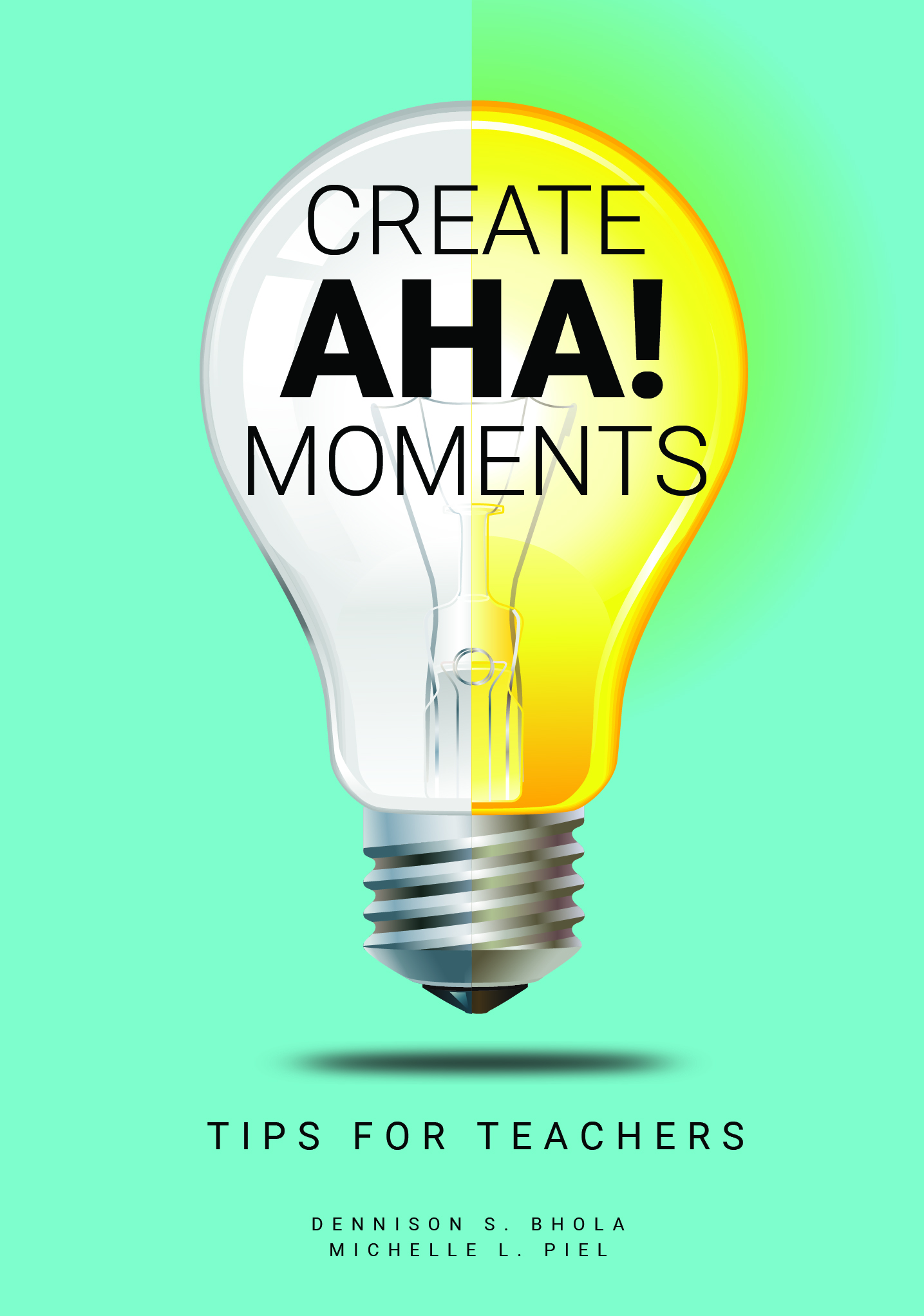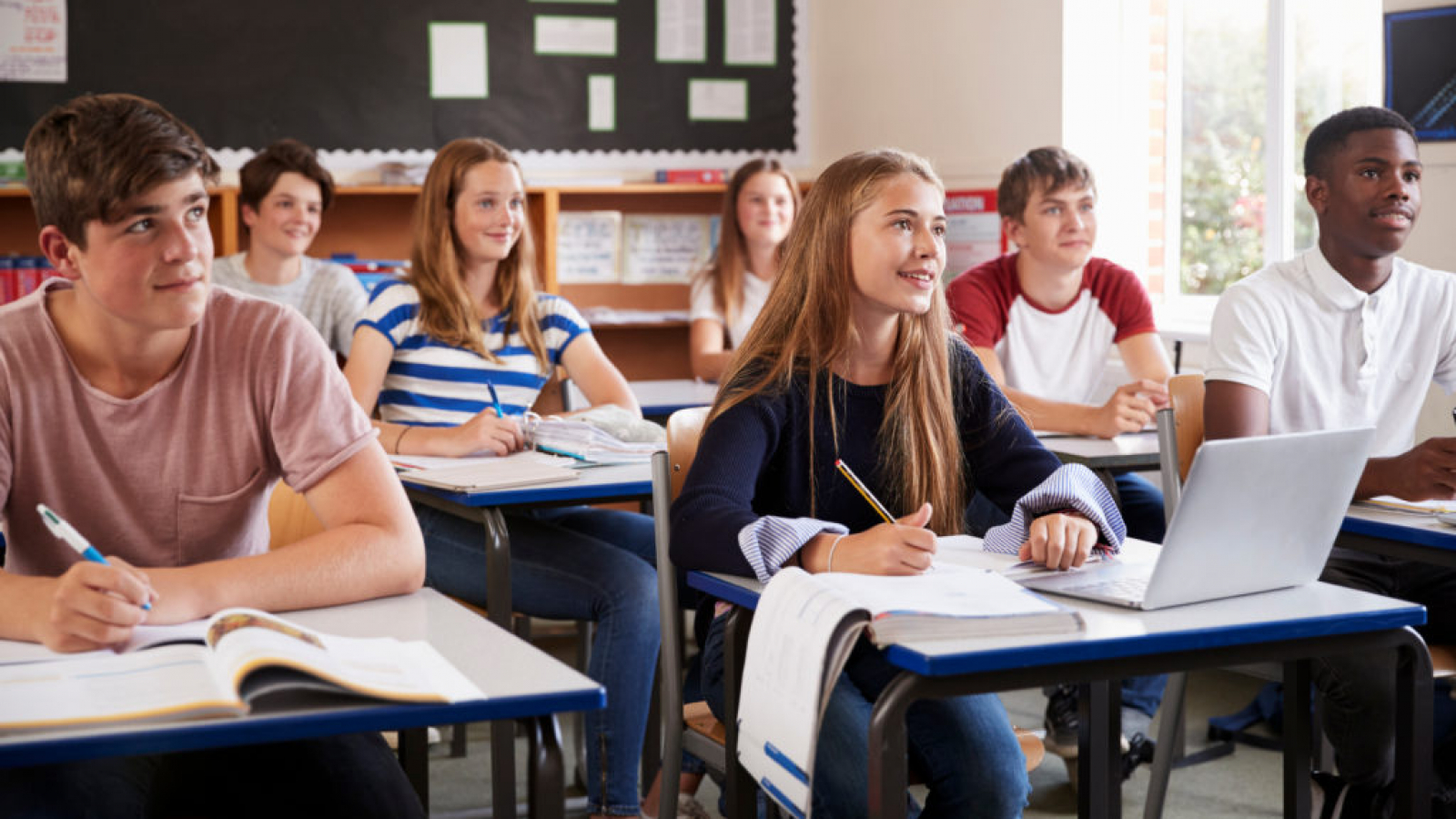
This is an excerpt from our new book, Create AHA! Moments, Tips for Teachers. For more information, check out the book’s website here.
Trust and credibility form a necessary foundation for strong teacher-student relationships. To create a safe psychological space for learning, teachers need to ensure that students feel a sense of safety and belonging in the classroom. Ideally, all students would have their survival, safety, social, and self-esteem needs supported by their family, friends, and school community. While we may not control what is going on outside the classroom, we can take measures to create a safe psychological space for learning inside the classroom. Part of our purpose as teachers is to support our students’ overall well-being so that they can focus their energy on learning.
As a starting point, we need to understand what roles and circumstances comprise students’ lives outside of school. One way to do this is to ask students about what they like to do on weekends, vacations, or special occasions with family or friends. The answers to these questions provide snapshots of their lives outside of school. More opportunities to learn about students as individuals can come about by asking them to create collages, write in journals, or share their likes/dislikes (e.g., favorite foods, hobbies, sports, and more) or hobbies.
Integrating the demands of school and home life is just as important for students as it is for teachers. Asking about a student’s life at home can help you understand who forms their support system. For example: Where do they live, who they live with, and who are their caregivers? What responsibilities do they have at home? Do they have siblings? Do they eat dinner as a family? Who are their best friends (and why)? Do they take care of a family pet? Answers to these questions describe the fabric of the student’s social network. When asking these questions, be compassionate and express a genuine interest. Learn something new about your students’ home lives but take care not to turn the conversation into an interrogation.
Near the beginning of the school year, introduce yourself to students’ parents or guardians as early as possible—maybe even prior to the first day of school. Resourceful teachers initiate team-oriented relationships with parents and guardians for the purpose of supporting student success. Experience offers this wisdom: It is best to start off on a positive note at the beginning of the school year, before much has happened to produce misconceptions about behavior or learning dips. Plus, when we seek to build rapport with parents under problem-free circumstances, we can earn trust upfront and establish a common goal of acting in the student’s best interests. Building a welcome bridge between school and home can improve communication and enhance the student’s learning and growth. Overall, relationships between parents (or guardians) and teachers can represent a shared purpose of helping students succeed in school and in life.
During school we can build and maintain a positive rapport with students in numerous ways. When students enter the classroom, we can ensure it is a welcoming environment. A simple greeting, acknowledging students as they enter the classroom is a great way to consistently reaffirm social acceptance and express interest in the daily progress of their lives. While they are in the classroom, we can strive to keep them physically comfortable and mentally active by ensuring that the temperature and air quality in the classroom is acceptable. Providing comfort includes letting students move around the classroom as they learn, not just sitting in place the whole time. To be prepared for emergencies, it is a good idea to keep extra snacks, socks, t-shirts, essentials, etc. because these will prove useful if students are hungry or if they have a trouble keeping their clothes clean. Finally, we need to make ourselves approachable by discreetly taking care of students’ requests for assistance in a timely manner.
Sometimes the little things we do matter the most. Let students know you care through your words and your actions. Students enjoy hearing how much you care about their learning and well-being every day. Based on age level, encourage students to act responsibly and take care of their health to the best of their ability. When they are lacking in hygiene, maybe they need access to supplies or a washing machine. Be prepared to help students to the best of your ability because providing a safety net can prevent a student from going through tough times at school. At school, it is important to do everything in our power to help students stay on track with their education by ensuring they have enough food/water, friends, guidance, and resources to “be well and learn” in school.
Building trust with students increases their motivation to come to class and learn from you. Getting to know students is fun to do because they become more engaged in class. Do not be surprised if students would like to have an opportunity to get to know you as a “real” person. Little by little, teachers can choose to share appropriate information with their students about their pets or favorite foods or hobbies outside of school. When you create opportunities for students to learn about you and each other, they will be able to build positive relationships that can make them feel good about school.
Our positive interactions with students help us affirm our role as caring adults in their lives. Developing strong relationships with students means that they will know that you have their best interests at heart. When basic human needs are met, students will be ready to listen and learn during instruction, guided practice, and high-quality feedback. Knowledge begets credibility, but trust is at the heart of teaching and learning.
About the Author
Michelle’s education includes a Certificate in Industrial Organizational Psychology and an M.S. in Human Resources. During her years as the Service Quality & Training Director of Greenleaf Hospitality Group, she planned curriculum and delivered face-to-face instruction for entry-level personnel, supervisors and managers. As an education consultant, she has facilitated focus groups, strategic planning sessions, professional development workshops, and executive coaching for school superintendents and principals. She has also contributed to the development of assessments to hire teachers and principals. In her leisure time, she has accumulated significant instructional experience from her decades as a coach. Recently, Michelle co-authored a book for educators called Create Aha! Moments: Tips for Teachers. This beautifully written book shares how to help students learn more and remember longer.


Add a Comment
You must be logged in to post a comment